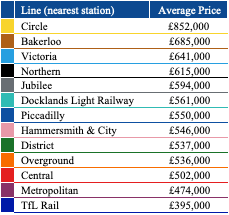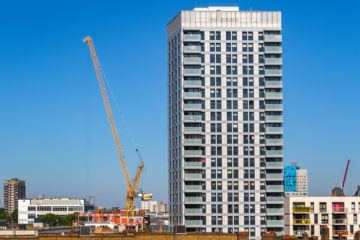New HMO licensing rules could impact London’s biggest rental market
Research by central London estate agency Bective has revealed how new HMO licensing rules will impact London’s biggest rental market, Westminster.
The new rules came into force in Westminster at the end of August 2021. They state that shared houses or flats where 3 or more people from 2 or more households share facilities now require licensing as HMOs (houses in multiple occupation). This is in replace of the rule that stated an HMO license wasn’t mandatory until 5 or more people were sharing facilities.
Bective’s research highlights that Westminster is the largest private rental market in London, where private rental stock accounts for 27% of all dwellings. In Westminster, this number rises to 42% of dwellings, followed by the City of London (41%) and Kensington & Chelsea (37%).
Top 10 boroughs ranked top to bottom for private rent as % of total stock
| Location | Private rental % of total stock |
| Westminster | 42.1% |
| City of London | 41.1% |
| Kensington and Chelsea | 37.2% |
| Newham | 36.0% |
| Tower Hamlets | 34.5% |
| Hammersmith and Fulham | 33.0% |
| Haringey | 32.7% |
| Wandsworth | 32.4% |
| Camden | 31.8% |
| Brent | 31.0% |
| London | 26.80% |
Westminster also has the 6th largest number of existing HMOs (9,539) of all London boroughs, trumped only by Ealing (20,429), Brent (16,984), Lambeth (12,000), Tower Hamlets (10,000), and Enfield (10,000).
Over the past three years, Westminster has seen the 8th largest increase in the number of HMOs, up 19% between 2017 and 2020, behind Hillingdon (668%), the City of London (614%), Lambeth (532%), Tower Hamlets (67%), Newham (58%), Waltham Forest (53%), and Harrow (36%).
Total number of HMO properties in London boroughs in 2017 and 2020, ranked from biggest 3-year increase to smallest
| Location | Estimate of total number of HMOs 2016 to 2017 | Estimate of total number of HMOs 2019 to 2020 | 3 year change |
| Hillingdon | 651 | 5,000 | 668% |
| City of London | 14 | 100 | 614% |
| Lambeth | 1,900 | 12,000 | 532% |
| Tower Hamlets | 6,000 | 10,000 | 67% |
| Newham | 6,000 | 9,500 | 58% |
| Waltham Forest | 3,900 | 5,951 | 53% |
| Harrow | 880 | 1,200 | 36% |
| Westminster | 8,000 | 9,539 | 19% |
| Greenwich | 6,500 | 7,500 | 15% |
| Hackney | 4,269 | 4,717 | 10% |
| Brent | 16,000 | 16,984 | 6% |
| Hounslow | 1,800 | 1,850 | 3% |
| Havering | 265 | 267 | 1% |
| Sutton | 1,200 | 1,200 | 0% |
| Ealing | 20,429 | 20,429 | 0% |
| Kingston upon Thames | 4,800 | 4,800 | 0% |
| Barnet | 5,930 | 5,930 | 0% |
| Croydon | 3,000 | 3,000 | 0% |
| Camden | 8,000 | 8,000 | 0% |
| Kensington & Chelsea | 4,434 | 4,000 | -10% |
| Bromley | 2,300 | 2,074 | -10% |
| Bexley | 1,400 | 1,200 | -14% |
| Redbridge | 5,000 | 4,000 | -20% |
| Enfield | 14,200 | 10,000 | -30% |
| Barking & Dagenham | 300 | 192 | -36% |
| Haringey | 12,000 | 6,000 | -50% |
| Hammersmith & Fulham | 6,633 | 3,000 | -55% |
| Lewisham | 14,810 | 6,000 | -59% |
| Southwark | 13,000 | 5,020 | -61% |
| Merton | 5,568 | 2,040 | -63% |
| Richmond upon Thames | 510 | 97 | -81% |
| Wandsworth | 15,000 | 820 | -95% |
| Islington | N/A | 400 | |
| London overall | 194,693 | 172,810 | -11% |
Westminster also ranks 12th in terms of current HMO numbers as a percentage of all rental stock (18%), a list that is topped by Ealing (53%), Brent (46%), and Enfield (32%).
HMOs as a percentage of private rental stock in top 20 London boroughs, ranked from largest percentage to smallest
| Location | Estimate of private rentals (2019) | Estimate of total number of HMOs 2019 to 2020 | HMOs as % of private rental stock |
| Ealing | 38,904 | 20,429 | 52.5% |
| Brent | 37,283 | 16,984 | 45.6% |
| Enfield | 31,051 | 10,000 | 32.2% |
| Greenwich | 25,191 | 7,500 | 29.8% |
| Kingston upon Thames | 16,370 | 4,800 | 29.3% |
| Lambeth | 42,245 | 12,000 | 28.4% |
| Tower Hamlets | 41,885 | 10,000 | 23.9% |
| Camden | 33,625 | 8,000 | 23.8% |
| Hillingdon | 22,029 | 5,000 | 22.7% |
| Newham | 42,124 | 9,500 | 22.6% |
| Waltham Forest | 28,059 | 5,951 | 21.2% |
| Westminster | 52,791 | 9,539 | 18.1% |
| Lewisham | 33,277 | 6,000 | 18.0% |
| Haringey | 35,781 | 6,000 | 16.8% |
| Redbridge | 26,336 | 4,000 | 15.2% |
| Southwark | 35,039 | 5,020 | 14.3% |
| Barnet | 42,235 | 5,930 | 14.0% |
| Hackney | 34,100 | 4,717 | 13.8% |
| Kensington and Chelsea | 32,670 | 4,000 | 12.2% |
| Hammersmith and Fulham | 29,399 | 3,000 | 10.2% |
| London overall | 963,794 | 172,810 | 17.9% |
However, with these changes now in force, Bective points out it is likely the number of HMOs within the borough will now spike.
Tom Dainty, Head of Lettings and Property Management at Bective, comments: “The impact of these new rules will be two-fold. Yes, it’s undeniable that additional HMO licensing and tighter scrutiny when dealing with rule-breakers will benefit tenants by raising the standard of living.
“But, at the same time, this increased scrutiny, along with the additional costs, might tempt landlords to up sticks from Westminster and find more profitable investments elsewhere.
“This exodus will be of detriment to tenants. Less landlords means less stock, and less stock means higher rent prices. With Westminster’s average rent already more than £2,600 a month, this could further price more tenants out of the borough.”






